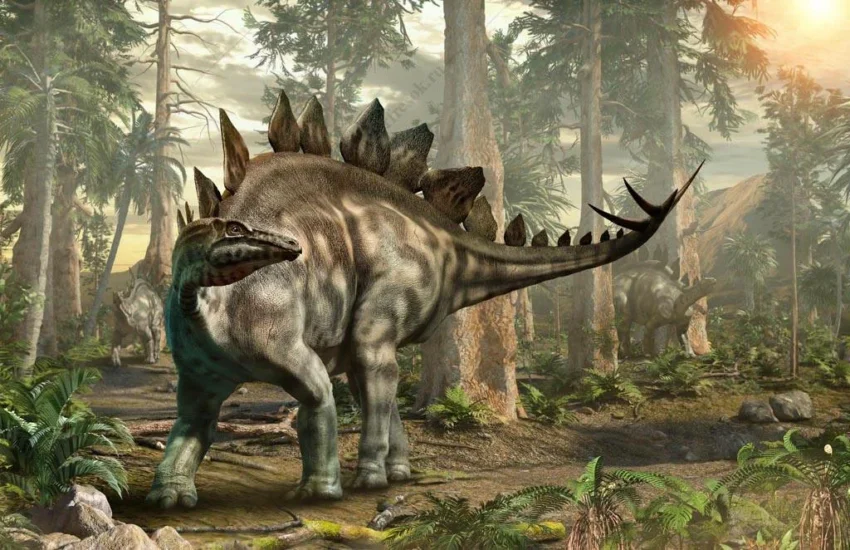The Stegosaurus, one of the most iconic dinosaurs, has captured the imagination of scientists and the public alike. With its distinctive back plates and spiked tail, this herbivorous dinosaur roamed the Earth during the Late Jurassic period, approximately 155 to 150 million years ago. Despite its fame, the reasons behind the extinction of Stegosaurus remain a topic of debate and intrigue among paleontologists. This article delves into the factors that may have led to the demise of this remarkable species.
Timeline and Context
Stegosaurus lived during a time when dinosaurs dominated the terrestrial ecosystems of the Mesozoic Era. The Late Jurassic period was characterized by a warm climate, abundant vegetation, and diverse dinosaur populations. However, the end of the Jurassic saw significant changes that likely impacted Stegosaurus and other contemporaneous species.
Potential Causes of Extinction
a) Environmental Changes
One possible factor in the extinction of Stegosaurus is environmental change. Towards the end of the Jurassic period, shifts in climate and habitat may have occurred due to volcanic activity, tectonic movements, or fluctuations in sea levels. These changes could have led to a decline in the lush vegetation that Stegosaurus depended on for food.
b) Competition
Stegosaurus shared its environment with other herbivorous dinosaurs, such as the massive sauropods. Competition for resources, particularly during periods of environmental stress, may have placed Stegosaurus at a disadvantage. Its relatively small size and less efficient digestive system compared to sauropods might have made survival more challenging.
c) Predation
The Late Jurassic period also saw the rise of formidable predators like Allosaurus. While Stegosaurus was equipped with defensive features, including its tail spikes (known as the thagomizer), it may still have been vulnerable to predation, especially for juveniles and weaker individuals. Increased predation pressure could have contributed to its decline.
d) Evolutionary Stagnation
Another theory suggests that Stegosaurus’ anatomical and physiological traits might not have adapted well to changing conditions. Its relatively small brain size, slow movement, and specialized diet may have limited its ability to cope with environmental and ecological shifts.
The Larger Picture: Mass Extinction Events
While Stegosaurus itself went extinct, it is important to note that this did not occur during one of the Earth’s five major mass extinction events. Instead, its extinction was likely part of a gradual turnover in dinosaur species. The Late Jurassic period gave way to the Early Cretaceous, a time when new species of dinosaurs began to dominate.
Modern Insights from Fossil Records
Advances in paleontology continue to shed light on the life and extinction of Stegosaurus. Fossil evidence provides clues about its diet, behavior, and interactions with other species. Isotopic analysis of fossilized bones and teeth helps reconstruct the environmental conditions of its time, offering further context for its extinction.
Conclusion
The extinction of Stegosaurus was likely the result of a combination of factors, including environmental changes, competition, predation, and evolutionary challenges. This knowledge not only deepens our appreciation for the past but also informs our perspective on the challenges faced by modern ecosystems.For more information click the link https://dinorepeat.com/

